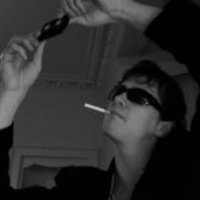
Jason Kennedy
Jason Kennedy is a senior lecturer and Animation Pathway Leader in the Digital Design department at Auckland University of Technology. He is a practicing artist with work in 3D animation, 3D Fine Art, video projection, and fine jewellery.
Jason entered the fine art world circuitously through his initial ambition to become a palaeontologist. He enrolled in Albion College’s geology programme (in Albion, Michigan, USA), only to discover that while he still loved dinosaurs, he liked the idea of animating them more than digging them up. Jason graduated from Albion in 2004 with a major in studio art (drawing) and minors in geology and mathematics. He completed a MFA in electronic art from the University of Cincinnati in 2007. His Masters research focused on the role of identity and immortality vis-à-vis digital representations of self. Jason is currently working on his PhD, which examines how our understanding of what is acting is changed by modern animation and performance capture practices. (Expected completion date: 2020.)
In addition to being an animator, Jason is also an actor, and he draws on these two areas of experience in his research.
Research interests: 3D animation, performance capture, motion capture, synthespians, acting, palaeontology
Supervisors: Stefan Marks and Frances Joseph
Jason entered the fine art world circuitously through his initial ambition to become a palaeontologist. He enrolled in Albion College’s geology programme (in Albion, Michigan, USA), only to discover that while he still loved dinosaurs, he liked the idea of animating them more than digging them up. Jason graduated from Albion in 2004 with a major in studio art (drawing) and minors in geology and mathematics. He completed a MFA in electronic art from the University of Cincinnati in 2007. His Masters research focused on the role of identity and immortality vis-à-vis digital representations of self. Jason is currently working on his PhD, which examines how our understanding of what is acting is changed by modern animation and performance capture practices. (Expected completion date: 2020.)
In addition to being an animator, Jason is also an actor, and he draws on these two areas of experience in his research.
Research interests: 3D animation, performance capture, motion capture, synthespians, acting, palaeontology
Supervisors: Stefan Marks and Frances Joseph
less
Related Authors
Tanine Allison
Emory University
Milad Tangshir
Università degli Studi di Torino
antonio pizzo
Università degli Studi di Torino
Lisa Bode
The University of Queensland, Australia
David Fleming
University of Nottingham, China Campus
William Brown
University of British Columbia
Jessica Aldred
Université de Montréal
Sharon Carnicke
University of Southern California
Drew Ayers
Eastern Washington University










Uploads
Papers by Jason Kennedy
• What is the nature of acting within the contexts of animation and performance capture?
• What is the potential for a knowledge of acting to have on the practice of animating, and for a knowledge of animation to have on the practice of acting?
• What is the role of the animator in interpreting an actor’s performance data and how does this affect our understanding of the authorship of a given performance?
This thesis is interdisciplinary and sits at the intersection between theories of acting, animation, film, and psychology. Additionally, this thesis engages with phenomenology and auto-ethnography to explore acting in performance capture from the perspective of a single individual as the actor, PeCap artist, and animator. This type of first-person experience-based insight is often missing from purely theoretical discussions about acting in performance capture and animation, and helps to provide a clearer understanding of the contributions of each creative role to the final PeCap result. This research provides a strong basis for the necessity of a paradigm revision for how acting is produced within a PeCap context.
due to a lack of established definitions. What is the relationship of these terms to each other, and how should they be understood from both technological and performance-based perspectives? By articulating clear definitions for these terms, it is possible to theorise a variety of performance types specific to CG characters in feature films. These categories provide an expanded understanding of how performance is created among CG characters, and draws into question whether classic examples of synthespians are really synthespians at all.
Drafts by Jason Kennedy
• What is the nature of acting within the contexts of animation and performance capture?
• What is the potential for a knowledge of acting to have on the practice of animating, and for a knowledge of animation to have on the practice of acting?
• What is the role of the animator in interpreting an actor’s performance data and how does this affect our understanding of the authorship of a given performance?
This thesis is interdisciplinary and sits at the intersection between theories of acting, animation, film, and psychology. Additionally, this thesis engages with phenomenology and auto-ethnography to explore acting in performance capture from the perspective of a single individual as the actor, PeCap artist, and animator. This type of first-person experience-based insight is often missing from purely theoretical discussions about acting in performance capture and animation, and helps to provide a clearer understanding of the contributions of each creative role to the final PeCap result. This research provides a strong basis for the necessity of a paradigm revision for how acting is produced within a PeCap context.
due to a lack of established definitions. What is the relationship of these terms to each other, and how should they be understood from both technological and performance-based perspectives? By articulating clear definitions for these terms, it is possible to theorise a variety of performance types specific to CG characters in feature films. These categories provide an expanded understanding of how performance is created among CG characters, and draws into question whether classic examples of synthespians are really synthespians at all.